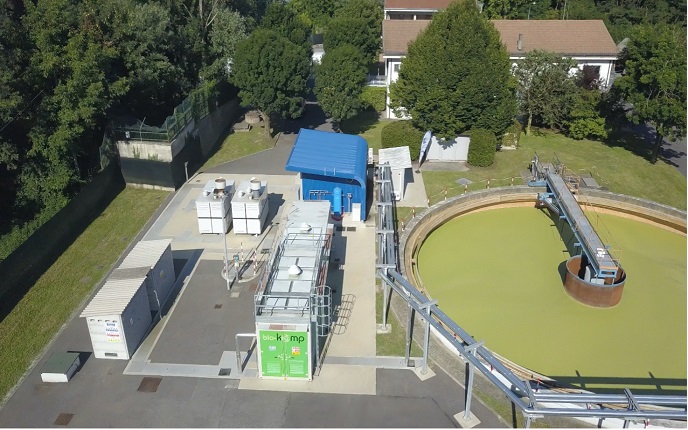Demonstrating the world’s first biogas-fed solid oxide industrial-sized fuel cell
A fuel cell is an electrochemical generator, powered by the chemical reaction of a fuel with an oxidising agent (usually oxygen). This reaction is different from combustion, with the product being electricity instead of heat and exhaust gases. The various types of fuel cell are named according to their electrolyte(opens in new window) material. For example, the familiar hydrogen fuel cell uses a polymeric electrolyte derived from Teflon. A solid oxide fuel cell (SOFC)(opens in new window) uses an electrolyte consisting of a solid oxide (better known as ceramic). A previous EU-funded project, SOFCOM(opens in new window), developed an SOFC-based poly-generation system. The generator ran on biogas fuel obtained from wastewater treatment. The system could operate in cooling, heating and power (CHP) configuration, meaning that it was able to usefully recover waste heat, with a complete recovery of the CO2 from the plant (carbon accumulated in form of micro-algae). Like all SOFCs, the SOFCOM system operated at very high temperature, yielding an efficient electrical conversion. The SOFCOM generator was a small-scale, proof-of-concept prototype. Considering emissions and efficiency, the system was the world’s best in the sub-megawatt class.
First large-scale demonstration
The EU-funded DEMOSOFC(opens in new window) project applied, analysed and improved SOFCOM’s technology, and demonstrated it at full scale at a wastewater treatment plant near Turin, Italy. Like the original, the demonstration version was also fed using a carbon-neutral biogas, obtained from the breakdown of organic components derived from the clean-up of municipal wastewater. The DEMOSOFC plant was the world’s first demonstration of a large (100+ kW) SOFC system fed by biogas. “We have designed, installed from scratch, operated and maintained a complete biogas-fed SOFC-based CHP plant,” explains project coordinator, Professor Massimo Santarelli. “It produces 110 kilowatts of electricity and 45 kilowatts of thermal power.” That is enough to power several homes or offices. The power output was slightly lower than the anticipated 174 kW because the project received only two of three SOFC modules expected from the supplier.
Efficient, clean operation
Approximately three years of real-life operation and testing showed that for 80 % of the operating time, the plant achieved better than 50 % efficiency for the electrical conversion from biogas to AC power, with a peak of 58 %. For about half the operating time, global efficiency was 80-90 %. Atmospheric emissions, if any, were below the instruments’ detection threshold. The results demonstrate the demo plant’s cost effectiveness and feasibility. “Now we have developed the complete knowledge of how to design and install a SOFC-based plant for industrial applications, with minimisation of the related costs,” adds Santarelli. “We also have full knowledge of its daily operation, including control logistics and safety procedures.” These results will be applicable to the future operation of similar plants. A second outcome was the project’s successful demonstration of a biogas cleaning unit, which prevents harmful contaminants from reaching the fuel cell. As a follow up, team members have been in discussions with several important end users, to replicate the DEMOSOFC plant. Only limiting application to the wastewater treatment plant in the EU, the replicability potential is huge (around 2-5 GW). This could represent an interesting early market as an introduction to an era of truly clean, green energy.







